Patagonia Refugio Daypack 30L Review
The sporty Patagonia Refugio Daypack 30L’s laptop sleeve is a nice add-on for those traveling with their device, but we’d prefer the key leash elsewhere.
Our Verdict
Save time. Get access to brief summaries of our reviews so you can browse and make decisions more efficiently.
Pros
- The detachable laptop sleeve is a nice value-add
- How you pack the main compartment doesn't affect the roominess of the front compartment
- It’s easy to get in and out of the main compartment thanks to the hatch-style opening
Cons
- We find the key leash hard to reach in the laptop sleeve
- It lacks much extra organization other than that built into the laptop sleeve
- The sternum strap’s hook mounting is not as granular as a sliding mount
Technical Details
-
Capacity
30l
-
Weight (lb)
1.75 lb (0.8 kg)
-
Dimensions
19 in x 12 in x 6.5 in (48.3 x 30.5 x 16.5 cm)
-
Notable Materials
Ripstop Polyester, Polyurethane (PU), PFC-free DWR Coating
-
Manufacturing Country
Vietnam
-
Laptop Compartment Size
15"
-
Warranty Information
Buying Options


Full Review
The Patagonia Refugio Daypack 30L has the sporty looks you’d expect from an outdoor brand, including a bungee-laden front. Make no mistake—the water-resistant exterior and beefy harness system make this backpack decently equipped for outdoor use. On the other hand, it has unique features that make it a compelling everyday backpack, for when you’re not hiking up and down a trail.

For starters, it comes with a detachable laptop sleeve with pockets for your device’s chargers and cables. Additionally, its roomy main compartment has a hatch-style opening that’s easy to access whether you’re packing it in your hotel room, on top of a hill, or during a busy train ride.
If all that sounds like it fits your needs, then jump into the full review below!
External Components
We hope you’re into sporty looks because that’s exactly the vibe the Refugio gives off with its bungee-laden front and DWR-coated recycled polyester shell. The Smolder Blue colorway mutes the bag’s more flamboyant aesthetic cues (we try not to draw unwarranted attention in day-to-day testing), but opting for the Buckhorn Green or Vessel Blue options will get you more pizazz. Whichever colorway you go with, the Refugio’s build quality keeps up with robust-feeling fabric, thick straps, and no loose stitching.
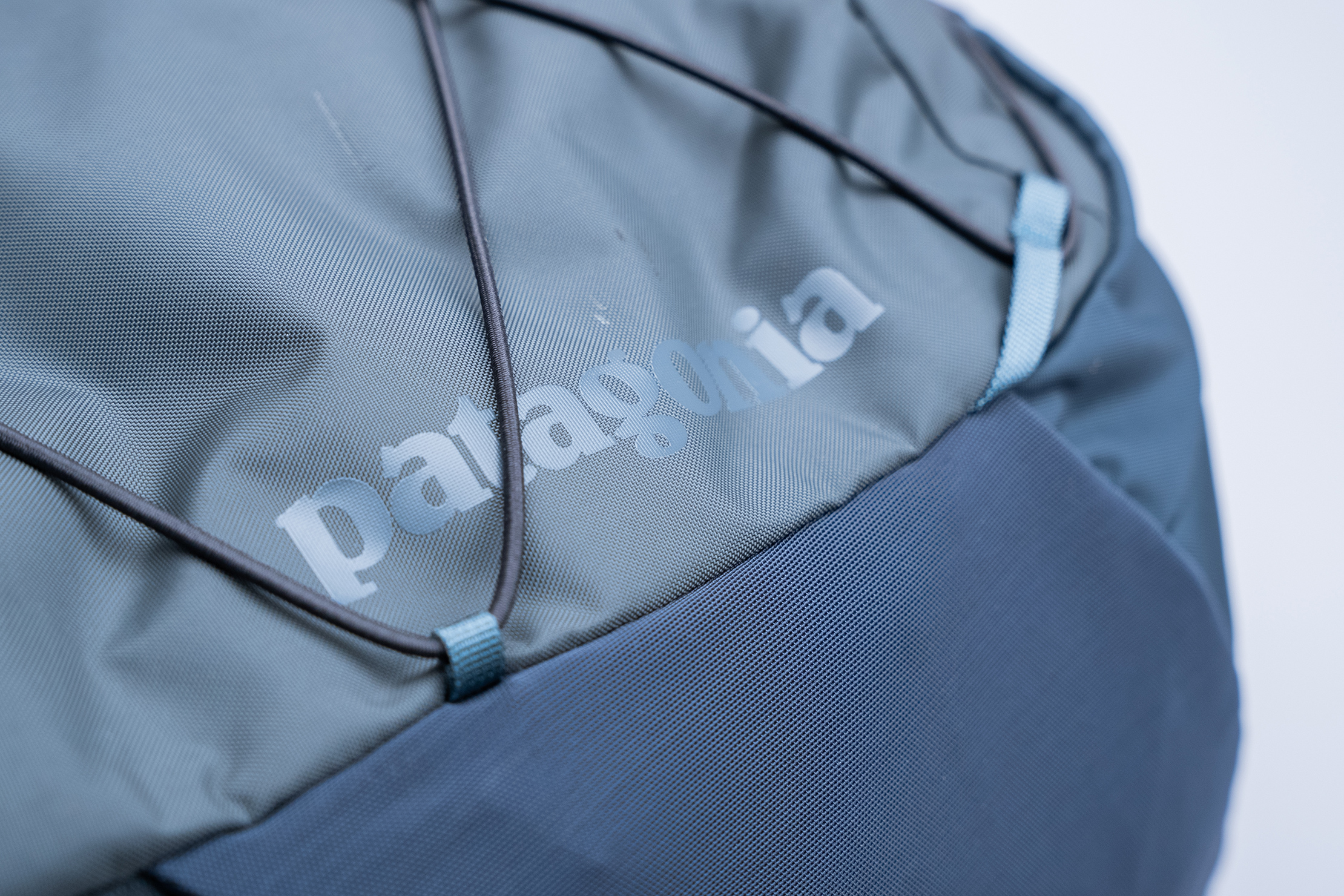
Bungee cords have many uses, and when a brand puts them on a backpack, it can be the most magical thing—at least for the people who need them. Arranged in a web-like fashion, it is a handy storage spot for bulky items such as shoes, a rolled-up jacket, or a half-eaten sub. Whatever it is, so long as it’s bigger than the bungee’s gaps, you can put it here. Why not use the main compartment? Well, you wouldn’t want to store used soccer cleats next to spare clothing, for example. Perhaps you want to keep your jacket within easy reach while commuting. Either way, or whatever other use cases you have for this bungee, it certainly has its practical appeal.
If we’re being honest, bungee setups are a bit overkill for our day-to-day usage since most of the gear we use daily is either inside the bag or in a sling. If anything, extra bits hanging off a backpack, such as a bungee, could just snag on door knobs and furniture, so we try to avoid this feature if we can. That’s just personal preference, though, and to be fair, the Refugio’s bungee stays flush and out of the way most of the time since its top cinch keeps a firm grasp on the cord.
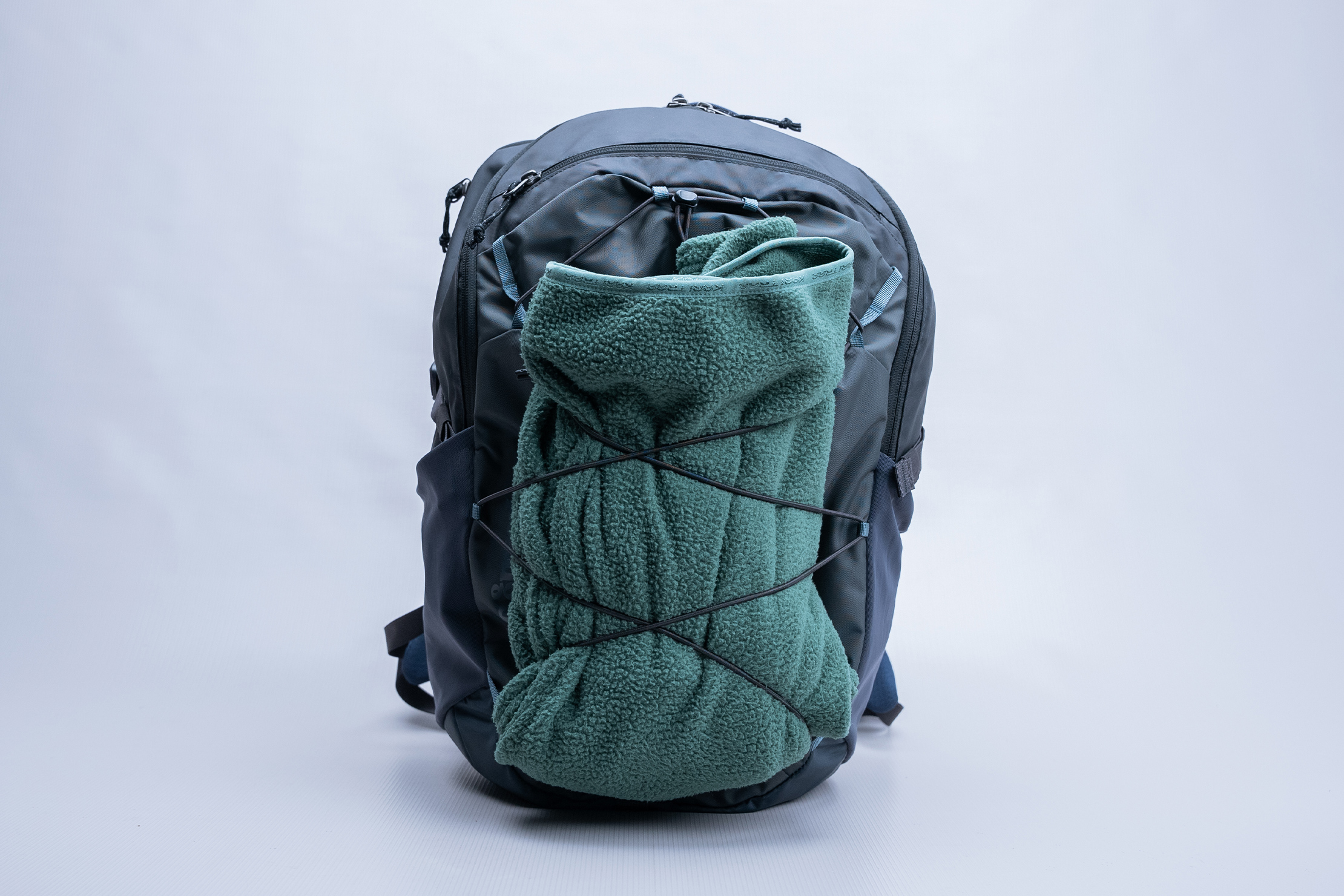
The water bottle pockets on the sides are made of simple elastic mesh without fancy built-in mechanisms, such as cinch cords or zippers. They’re substantially wide and will have no issues accommodating bottles in the 32-ounce range and below. Your only concern here is the smaller you go, the less grip the elastic will have on your bottle. Fortunately, you can use the compression straps above the pockets to anchor bottles, provided they have a handle or lid to loop them through.
At the top of the bag is the lone grab handle. Like the water bottle pockets, this handle has nothing fancy going for it save for being stitched over to give at least some semblance of thickness. Padding this is not, though, so this handle is mostly for those situations where you need to grab the bag quickly and place it in your trunk or overhead bin. The handle’s central location makes it somewhat tricky when you want to hang the bag on a shallow bathroom stall hook. Fortunately, the handle’s size gives you enough allowance to do just that.
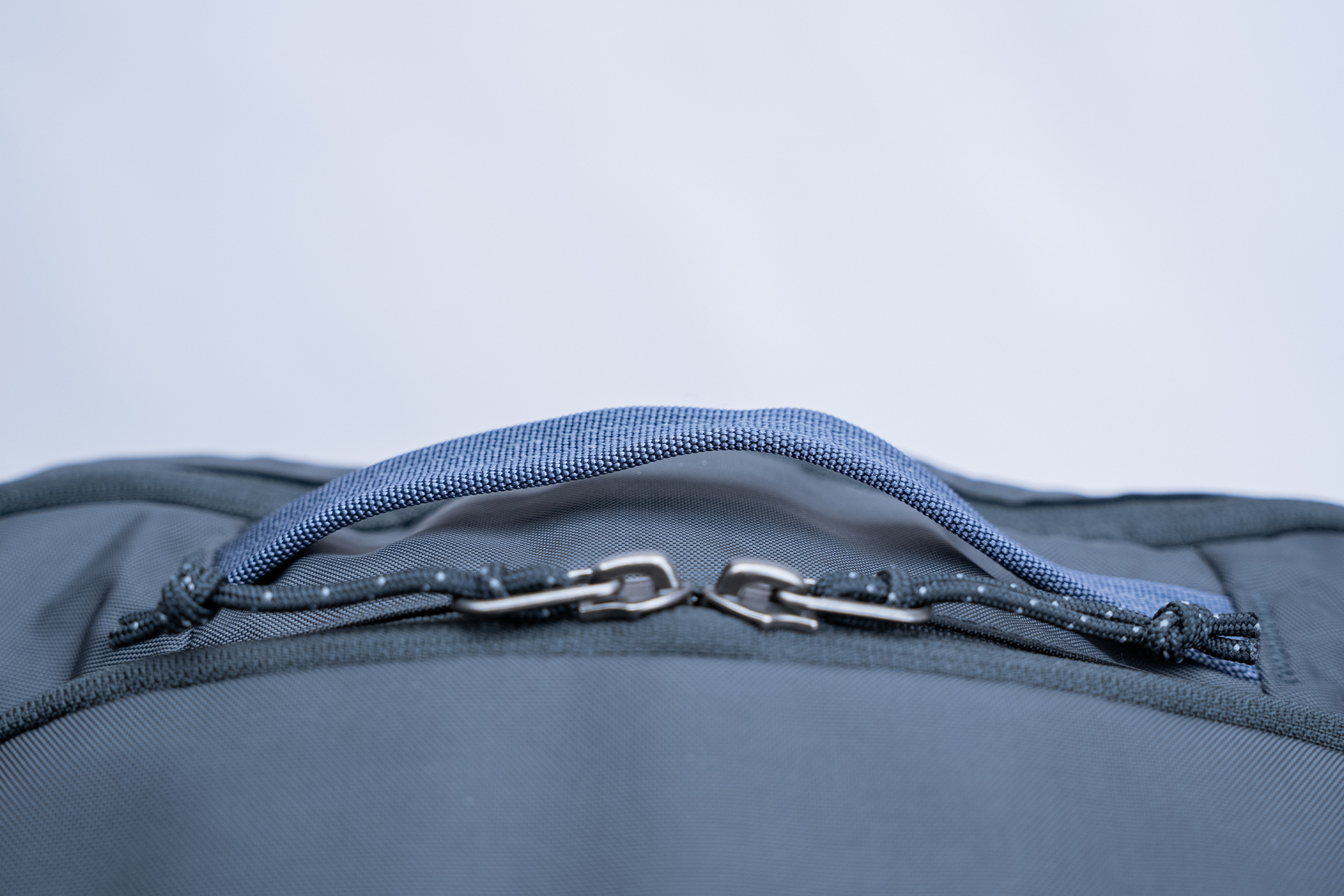
The Refugio’s harness system is surprisingly well-equipped for a daypack. Of particular note are the shoulder strap’s load lifters, a feature we mostly see reserved for large travel backpacks. They help shift some of the bag’s weight higher to avoid that dragging feeling caused by sagging. They’re essentially extra levers you can fine-tune to tailor the bag’s fit to your needs. We wouldn’t go as far as to say these are a must-have for all daypacks, but it’s a case of “we would rather have them and not need them than need them and not have them.”
Otherwise, the Refugio’s harness system is relatively simple, if not too basic. The shoulder straps feature a slightly curved design with rounded edges to be gentler along the neck. In terms of padding, there’s a sufficient amount to cushion the bag’s weight, and it’s thankfully not the stiff kind that feels like packaging. The material is forgiving and quite soft. On the other hand, breathability feels somewhat lacking despite the mesh material covering both straps and the back panel.
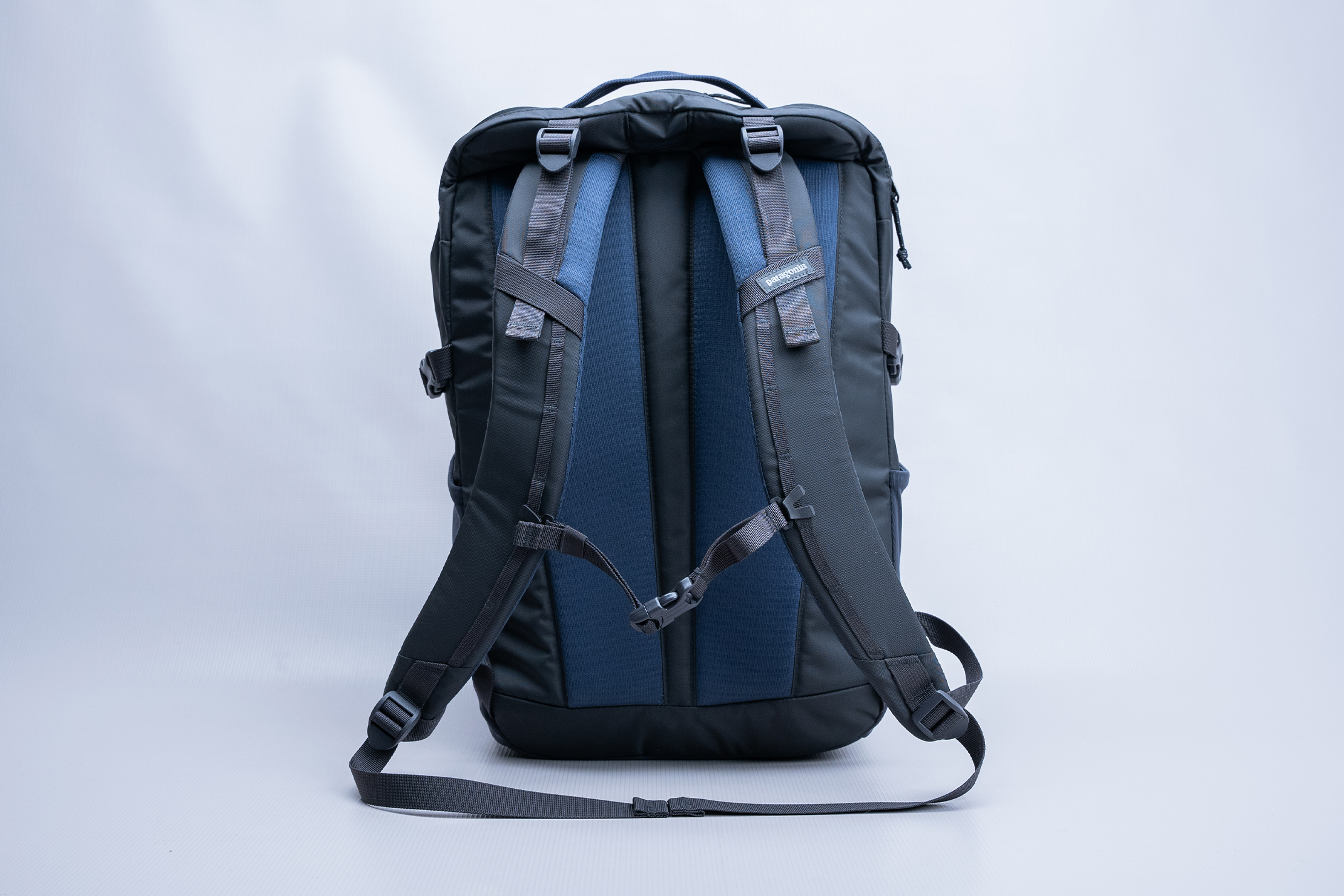
To be honest, we’re mostly nitpicking at this point, and we’ll elaborate further on the Refugio’s comfortability in the next section. But before we do, it would be remiss of us not to skip the sternum strap and its hook mounting. Along the shoulder straps are loops where each half of the sternum strap mounts, and to be fair, this works just fine. Adjust it once, and you’ll likely never have to fuss with it again. However, those who frequently have to adjust their sternum strap for various reasons (wearing thicker clothing, for example) might wish for a more convenient mounting system, such as a sliding rail, found on other daypacks.
Fit Notes
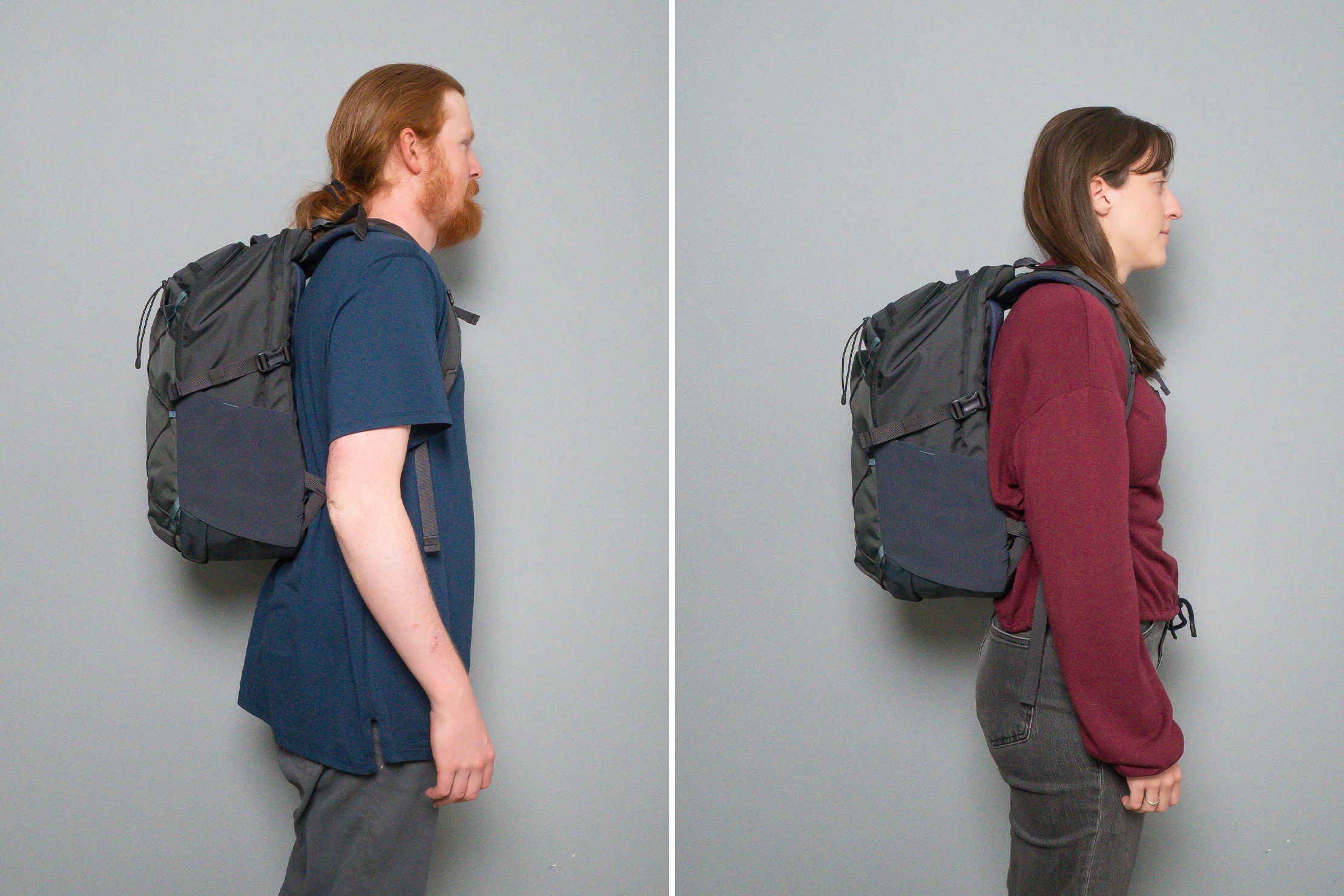
Patagonia says this 30-liter version of the Refugio is ideal for 19-inch torsos. Surprisingly, the Pack Hacker crew found it generally comfortable, even with torsos as small as 16 inches. Our biggest concerns when pairing relatively large backpacks with smaller frames are the backward pulling feel (sagging) and discomfort along the lower back due to excess length.
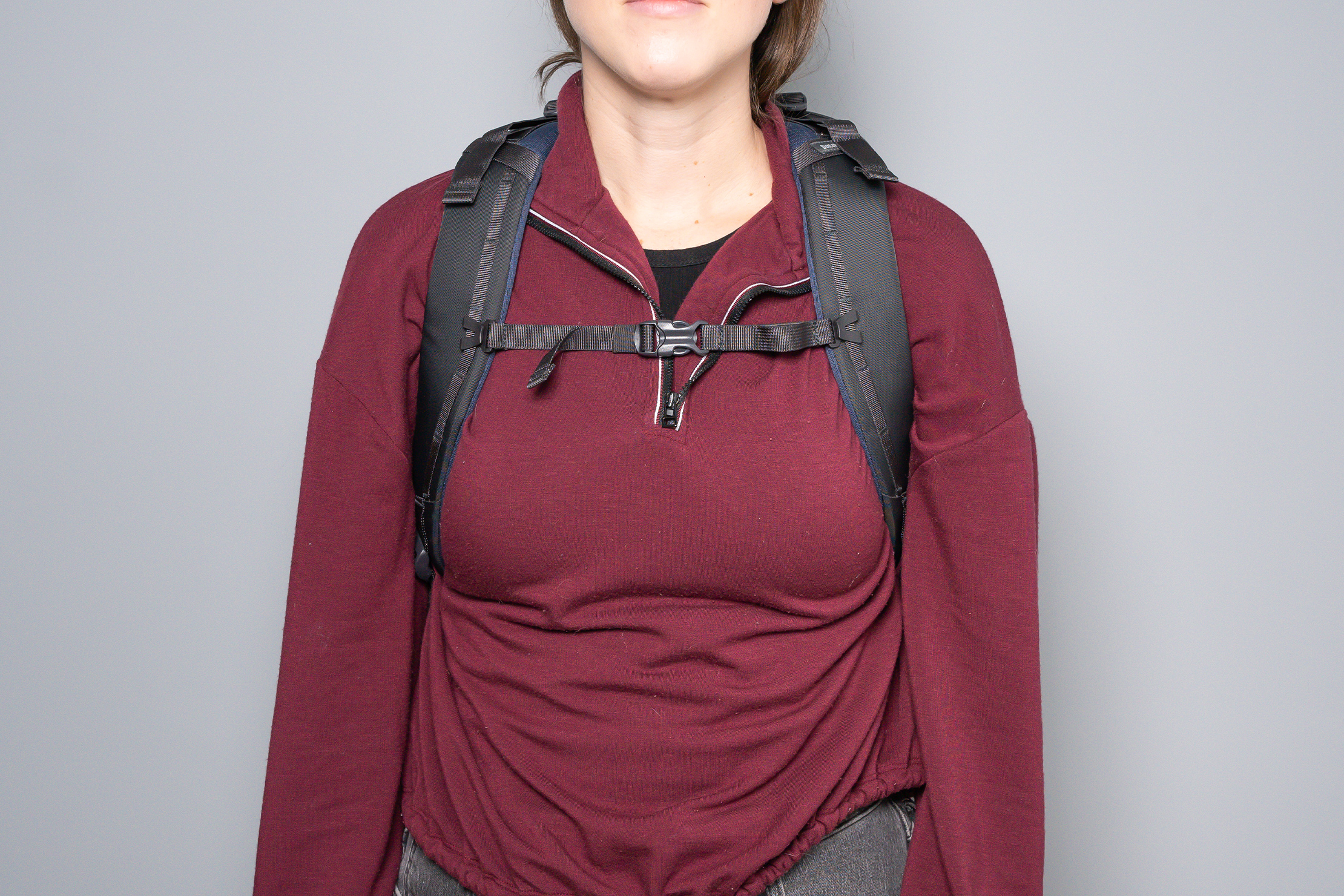
Neither was a challenge for the load lifters and sternum strap working together to keep the bag cinched forward and upward. There are limits, though, and the more petite you are, the more likely you’d find the Refugio more cumbersome. The good news is that there’s a 26-liter version available as well that’s better suited for those with smaller frames.
Inside The Backpack
First among the Refugio’s pockets is the one at the front. This one arguably sees the most action, at least for us since we stashed most of our everyday carry accessories here. There’s enough room for a travel wallet, a set of keys, a power bank, and a smartphone, thanks to the pocket having a substantial amount of volume independent from the main compartment. In other words, even once you’ve packed all your important gear, such as clothing and packing cubes, within the main compartment, you can rest assured that there will be leftover room in this pocket for the rest of your accessories.
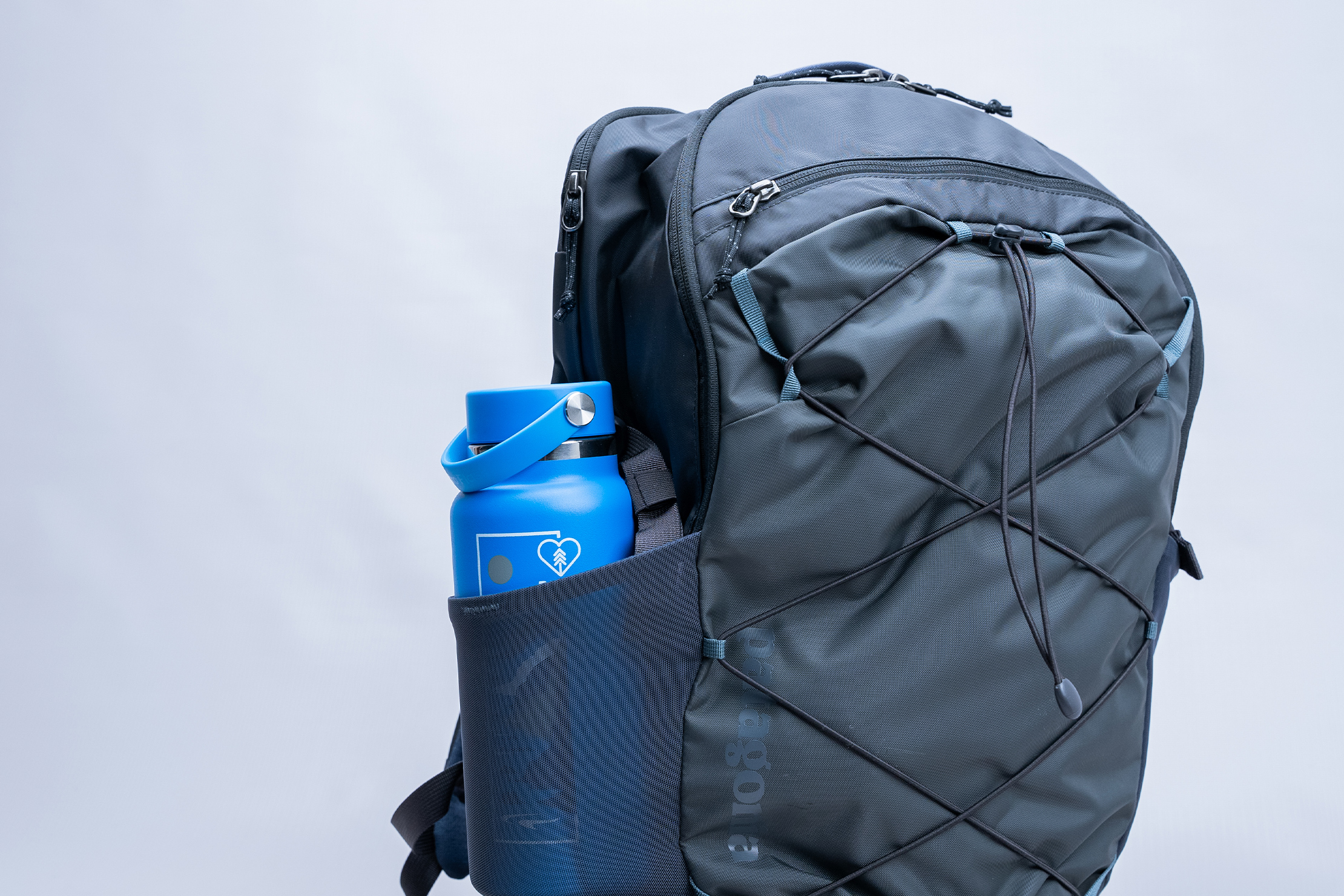
Keep in mind that if you load this front pocket with enough gear, it can get heavy enough to impact how the main compartment opens. With enough weight, the front can just fold out haphazardly and tip the entire bag over—simple but cruel physics.
Over at the back is the laptop compartment. It’s not unheard of for a daypack to have a separate compartment dedicated to a laptop, though we won’t take it for granted. Having one means not having to dig through the main compartment when you need to take your laptop out to satisfy that quick burst of fleeting work motivation. The opening is the width of the bag, which is wide enough, though we wish the zippers went lower to make ingress and egress even easier.
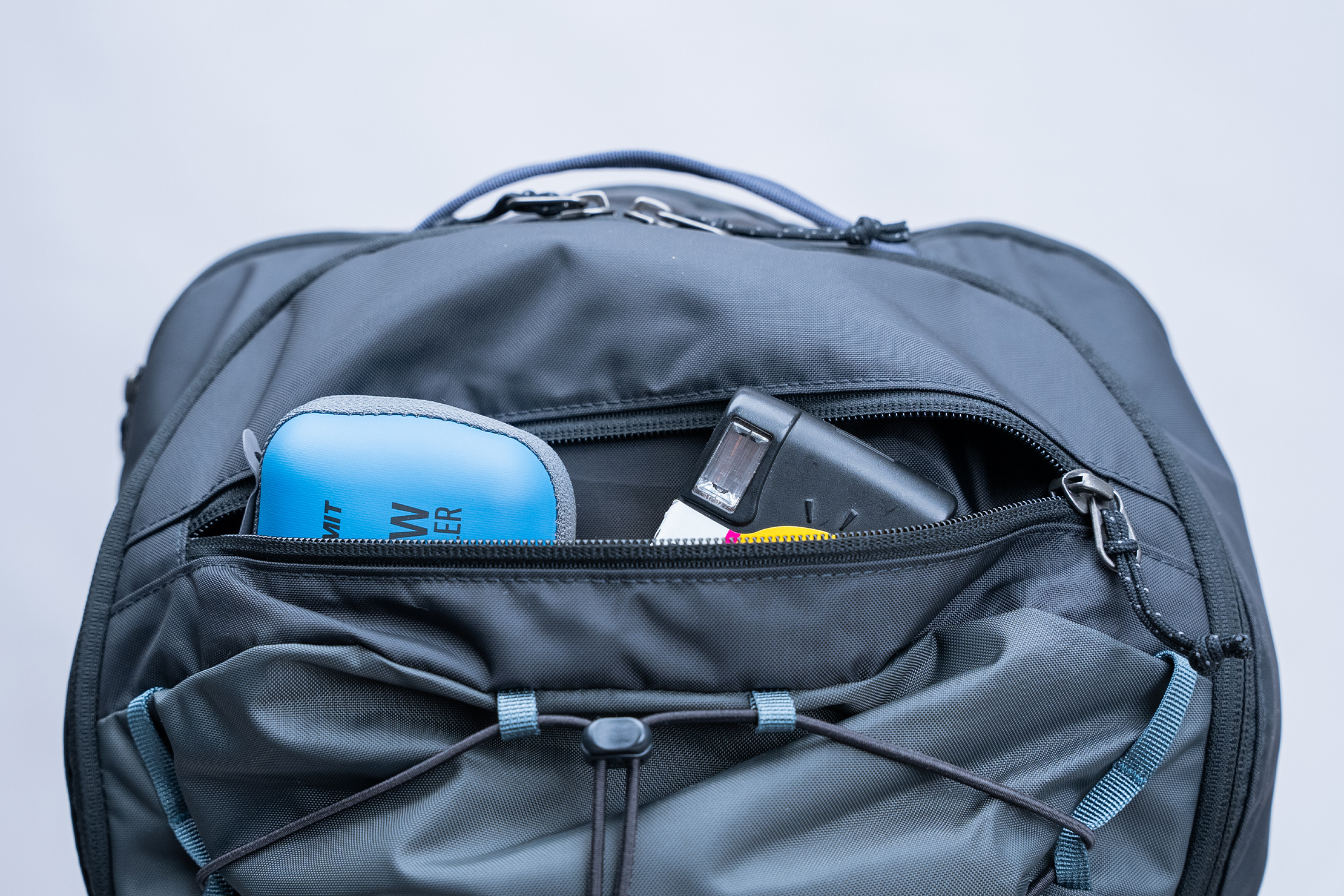
One of the Refugio’s unique features is the included laptop sleeve. Other daypacks would’ve had a simple built-in sleeve, but the Refugio has one that’s completely detached. The sleeve is surprisingly well-appointed, with twin mesh pockets for cables and charging adapters at the top and a large zippered mesh pocket at the bottom. The latter also has a built-in key leash, though we’re puzzled why they’d put one there. We’d expect a key leash in a more easy-to-reach pocket (like the front one) but not on a detachable laptop sleeve meant to be stowed at the back.
But hey, those are just extras, and having extra protection for a precious laptop is a nice inclusion. The opening is sealed by a hook-and-loop flap, and there’s sufficient padding to cushion even a large 16-inch MacBook Pro. If you’re not thrilled by this accessory, the good news is that the laptop compartment is large enough to accommodate your own laptop sleeve if you already have one. Alternatively, you can ditch carrying a laptop altogether and throw a hydration bladder there instead. The small loop used to anchor the included laptop sleeve also works for that, and there’s a corresponding pass-through for a drinking tube, as well.
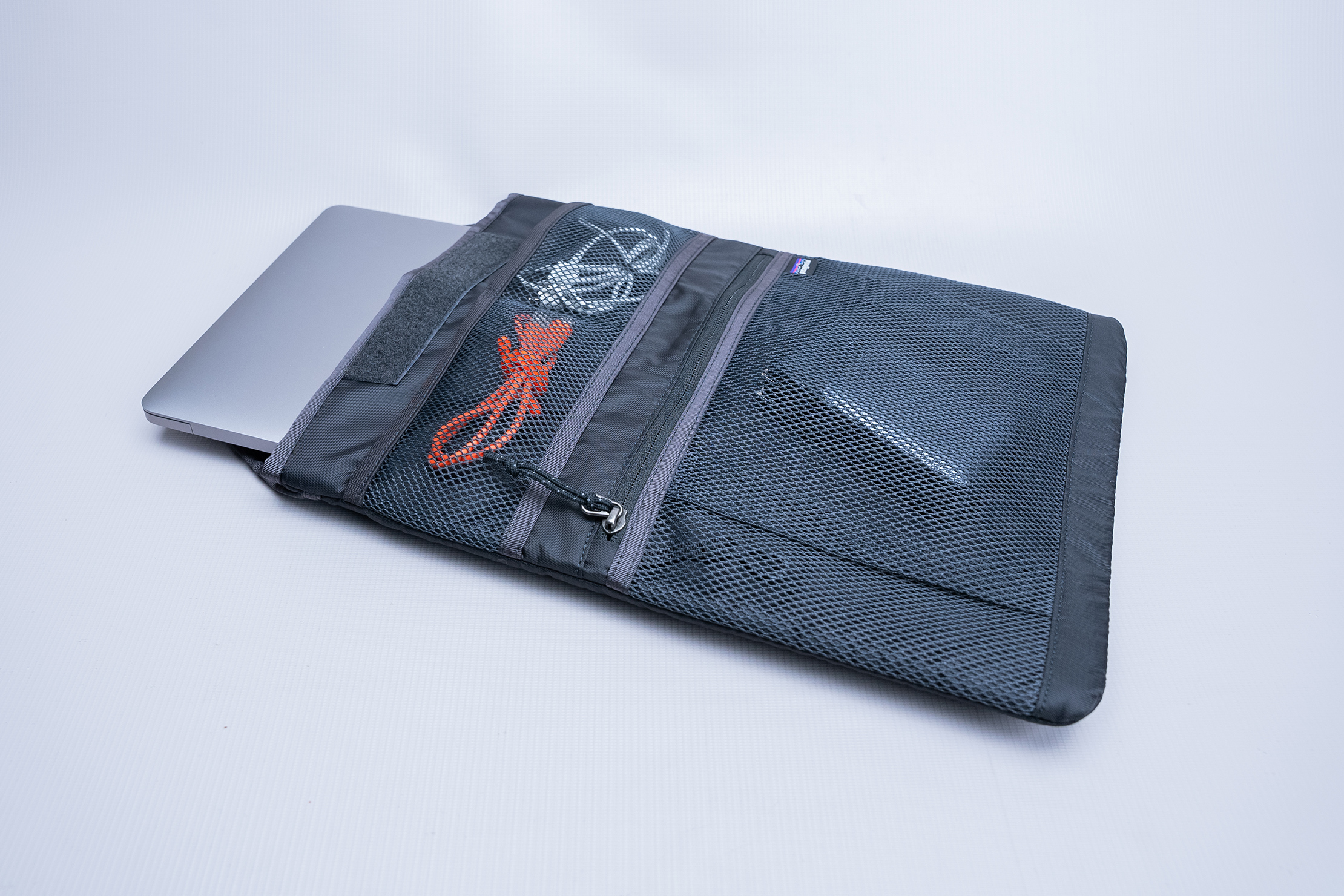
The main compartment’s opening zips from the sides and along the top. Unlike other daypacks, though, the opening extends further back, giving it that hatch-style shape for a wider interior view. We’ve seen this shaped opening on other bags, such as the Chrome Industries Volcan Backpack, and we like it since it makes taking gear out easier. By comparison, simpler horseshoe-style openings leave a ton of fabric obscuring the top side.
It’s a very thoughtful design choice by Patagonia, especially considering how much gear you can fit into the Refugio’s 30-liter capacity. In our case, we fit three shirts, two pairs of pants, a NOMATIC Tech Organizer that’s been moonlighting as a toiletry bag, and a pair of sneakers. Note that we weren’t using compression cubes, so there are definitely ways to squeeze more gear inside if you really want to. That said, you might want to pack freestyle (as in without the aid of organizers and packing cubes) so you can more easily fill in empty spaces wherever they appear.
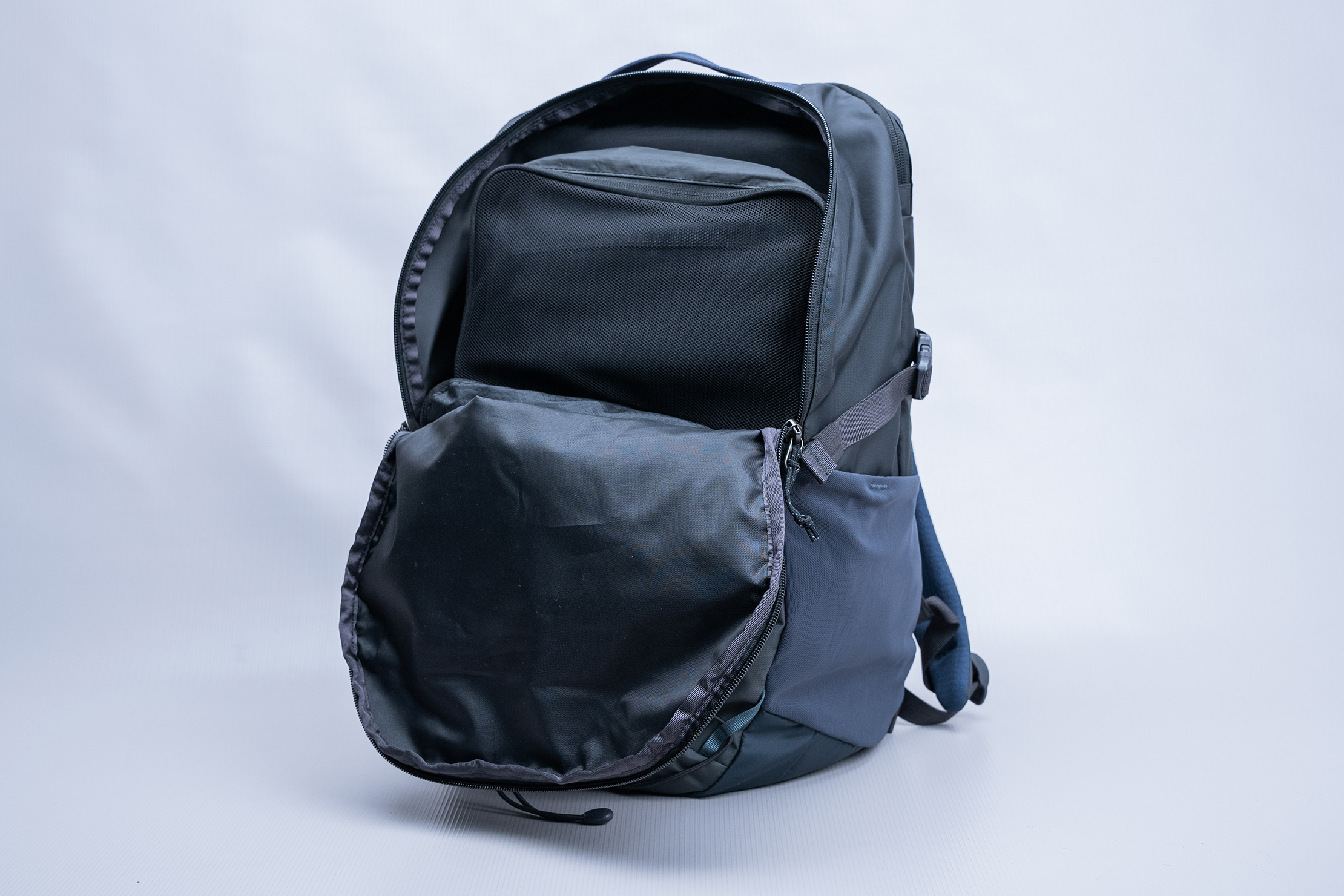
Of notable absence are any extra pockets within the main compartment. In a somewhat ironic twist, gear from the surrounding pockets, such as the laptop sleeve’s mesh pockets, can poke and cut into the main compartment’s space. This isn’t significant and doesn’t impact the packing process, though it is worth noting if you’re picky about that.
Usage Timeline
Condition: Excellent
- Surprisingly roomy for 30 liters
- Digging the removable padded laptop sleeve
- Seems like a great gym-to-office-to-airplane bag
Condition: Excellent
- Holding up great—only a couple blemishes on the front face
- Surprisingly easy to load with enough gear for multiple days of travel
- Load lifters are a nice surprise, as we don’t usually see them on packs like these








Get your questions about the Patagonia Refugio Daypack 30L answered from our team and the Pro Community right here on the page. Plus, join discussions with other members about gear, guides, and more.
Join Pack Hacker Pro or, Sign In